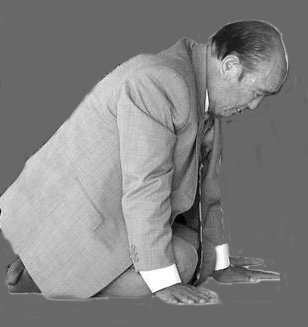Acts 17
5 The Jewish leaders were jealous and got some worthless bums who hung around the marketplace to start a riot in the city. They wanted to drag Paul and Silas out to the mob, and so they went straight to Jason’s home. 6 But when they did not find them there, they dragged out Jason and some of the Lord’s followers. They took them to the city authorities and shouted, “Paul and Silas have been upsetting things everywhere. Now they have come here, 7 and Jason has welcomed them into his home. All of them break the laws of the Roman Emperor by claiming that someone named Jesus is king.”
8 The officials and the people were upset when they heard this. 9 So they made Jason and the other followers pay bail before letting them go.
Isaiah 1
1 I am Isaiah, the son of Amoz.
And this is the message[a] that I was given about Judah and Jerusalem when Uzziah, Jotham, Ahaz, and Hezekiah were the kings of Judah:[b]
2 The Lord has said,
“Listen, heaven and earth!
The children I raised
have turned against me.
3 Oxen and donkeys know
who owns and feeds them,
but my people won’t ever learn.”
Exposition of the Divine Principle
3 Color Edition-The Red part
Part 2
Chapter 3
The Periods in Providential History and the Determination of Their Lengths
PARALLEL PROVIDENTIAL PERIODS
When a period of history repeats the events of a previous period, albeit with differences in scope and degree, the two periods are called parallel providential periods. The principal cause behind these parallels lies in God’s providence of restoration. Parallel providential periods recur because of repeated dispensations to restore the foundation for the Messiah. Accordingly, the factors which determine the formation of parallel providential periods are: first, the three conditions necessary for the foundation of faith (the central figure, the object for the condition and the numerical period of indemnity) and second, the indemnity condition to remove the fallen nature, which is necessary to restore the foundation of substance. Based on these factors, two characteristics of parallel providential periods stand out. First, the lengths of the parallel providential periods are determined based on a fixed number of generations or years of the indemnity period necessary for restoring the foundation of faith.
Second, the parallels in history are shaped by the other three providential factors: the central figure and the object for the condition offered for the foundation of faith, and the indemnity condition to remove the fallen nature for the foundation of substance.
THE NUMBER OF GENERATIONS OR YEARS IN THE PERIODS OF THE AGE OF THE PROVIDENCE TO LAY THE FOUNDATION FOR RESTORATION
2.1 WHY AND HOW THE PROVIDENCE OF RESTORATION IS PROLONGED
Why has the providence of restoration been prolonged? This question can only be answered with an understanding of the principle of predestination. According to this principle, since God absolutely predestines His Will, He surely will realize it one day. However, whether God’s Will is fulfilled through any particular individual is conditional upon the fulfillment of his portion of responsibility, which is in addition to God’s portion of responsibility. Accordingly, when the Will is not fulfilled because the responsible person fails, God will choose another person in a different era to take his place. God will continue His work until its complete fulfillment, prolonging the providence in the process.
Let us next examine how the providence of restoration has been prolonged. According to the Principle of Creation, God is a being of the number three. All things created in His likeness manifest themselves through a three-stage process with respect to their mode of existence, movement and growth. whenever the providence of restoration is prolonged, it may extend to as many as three stages. On the basis of the Principle of Creation, up to three attempts are allowed.
2.2 VERTICAL INDEMNITY CONDITIONS AND HORIZONTAL RESTORATION THROUGH INDEMNITY
To inherit and complete the missions of his predecessors in providential history, a central figure responsible for the providence of restoration must fulfill, in a short time, all the indemnity conditions which his predecessors tried to fulfill. The conditions which accumulate in the course of providential history due to central figures’ failures to complete their responsibility are called vertical indemnity conditions. The task of the central figure to fulfill all these conditions in a short time is called horizontal restoration through indemnity.
2.3 HORIZONTAL RESTORATION THROUGH INDEMNITY CARRIED OUT VERTICALLY
By making an acceptable symbolic offering, Abraham was supposed to restore horizontally through indemnity all the vertical indemnity conditions which had accumulated due to the mistakes of Adam’s family and Noah’s family. Since this was the third attempt in the providence to restore the family foundation for the Messiah, the Principle required that his family accomplish God’s Will without fail.
God could credit Abraham with having fulfilled, in his own generation, the horizontal indemnity conditions which he had failed to complete, by completing them vertically through the generations of Isaac and Jacob. This type of restoration is called horizontal restoration through indemnity carried out vertically.
View slides 1 to 22 below for an illustrated presentation of the above content:
2007p2-CHAPT-3-PeriodsOfHistoryTheirLengths_revised-4-28-2014